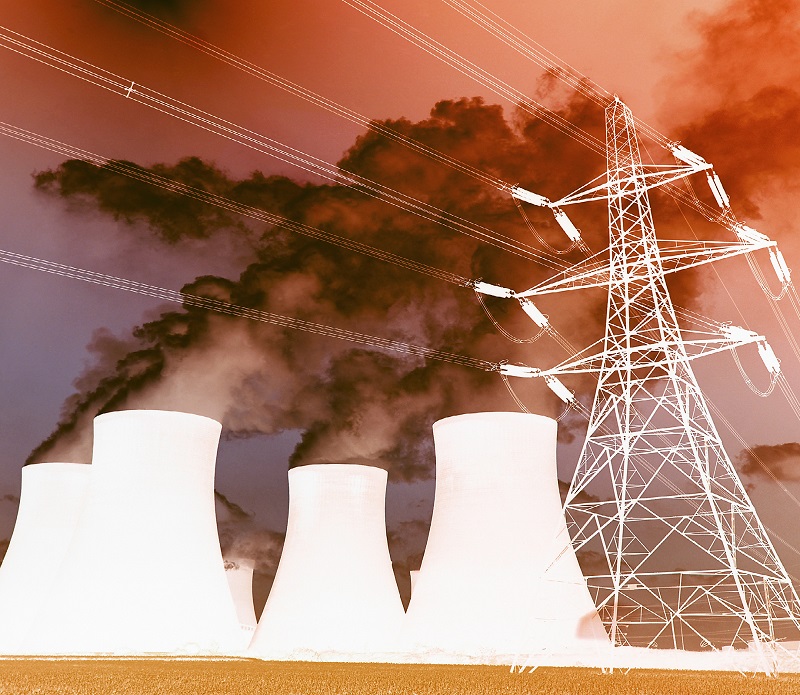Fly ash

|
Contents |
[edit] Introduction
Fly ash is a general term given to the lighter fine ash that is produced during the combustion of any material in a furnace or incinerator, it can be around 5-10% of the mass of the material being burnt. The density of this lighter fly ash called fly ash because it is kept in suspension during combustion and normally accumulates on the sides of chimney flues. The other ash that is produced is known as the main ash or bottom ash, this is a heavier ash that falls to the base of the incinerator. Fly ash is also commonly associated more directly with the combustion of coal as described here.
Fly ash (or flue ash or pulverised flue ash PFA) is a by-product of the coal combustion process, particularly in electricity generating power stations. It is formed when fine particulates of burned coal fuse in suspension and are driven out with flue gases. As they are driven out of the combustion chamber, the fused material cools and forms glassy particles called fly ash. Modern coal-fired power plants use particle filtration equipment to catch the fly ash before it reaches the chimneys.
(NB: Coal ash is the term given to the mixture of fly ash (which rises) and the bottom ash which falls to the bottom of the boiler).
[edit] Composition
The chemical components of fly ash will depend on the type of coal being burnt and its origin. Typically, if the coal derives from coal-bearing rock strata, the fly ash will include substantial quantities of silicon dioxide (SiO2), aluminium oxide (Al2O3) and calcium oxide (CaO). Other constituents may be present as trace quantities and may include (alphabetical order) arsenic, beryllium, boron, lead, mercury, thallium and vanadium – to name a few. In appearance similar to Portland cement, fly ash is a fine powder with particles that are largely spherical-shaped, ranging in size from 0.5µm to 300 µm.
Before the advent of modern air pollution control standards, much of the smog and air pollution in early to mid-20th century European cities was partly the result of releasing unfiltered fly ash directly into the atmosphere.
Fortunately, environmental and health legislation has reduced the emissions to less than 1% of the fly ash produced. Modern filtration processes may use mechanical collectors (such as dust cyclones that rely on vortex separation); electrostatic precipitators or filter bags. This has resulted in huge quantities of fly ash that must be disposed of: today, around 65% of the global fly ash production is sent to landfill. This has increased landfill costs globally which has led to more efforts to find recycling uses.
[edit] Classes of fly ash
There are two classes of fly ash:
- Class F (high calcium) largely produced by burning bituminous or anthracite coals. Pozzolanic in nature.
- Class C (low calcium) largely from burning sub-bituminous or lignite coal.
[edit] Applications
One of the largest consumers of fly ash is the production of concrete, where it is used as a substitute for Portland cement. Other uses include as a constituent in:
- Concrete block paving and other concrete products, such as pipes.
- Clay brick production.
- Blended cements.
- Mineral filler for asphalt roads.
- Soil stabilisation.
- Structural fill.
- Waste stabilisation and treatment.
[edit] Related articles on Designing Buildings Wiki
Featured articles and news
RTPI leader to become new CIOB Chief Executive Officer
Dr Victoria Hills MRTPI, FICE to take over after Caroline Gumble’s departure.
Social and affordable housing, a long term plan for delivery
The “Delivering a Decade of Renewal for Social and Affordable Housing” strategy sets out future path.
A change to adoptive architecture
Effects of global weather warming on architectural detailing, material choice and human interaction.
The proposed publicly owned and backed subsidiary of Homes England, to facilitate new homes.
How big is the problem and what can we do to mitigate the effects?
Overheating guidance and tools for building designers
A number of cool guides to help with the heat.
The UK's Modern Industrial Strategy: A 10 year plan
Previous consultation criticism, current key elements and general support with some persisting reservations.
Building Safety Regulator reforms
New roles, new staff and a new fast track service pave the way for a single construction regulator.
Architectural Technologist CPDs and Communications
CIAT CPD… and how you can do it!
Cooling centres and cool spaces
Managing extreme heat in cities by directing the public to places for heat stress relief and water sources.
Winter gardens: A brief history and warm variations
Extending the season with glass in different forms and terms.
Restoring Great Yarmouth's Winter Gardens
Transforming one of the least sustainable constructions imaginable.
Construction Skills Mission Board launch sector drive
Newly formed government and industry collaboration set strategy for recruiting an additional 100,000 construction workers a year.
New Architects Code comes into effect in September 2025
ARB Architects Code of Conduct and Practice available with ongoing consultation regarding guidance.
Welsh Skills Body (Medr) launches ambitious plan
The new skills body brings together funding and regulation of tertiary education and research for the devolved nation.
Paul Gandy FCIOB announced as next CIOB President
Former Tilbury Douglas CEO takes helm.
UK Infrastructure: A 10 Year Strategy. In brief with reactions
With the National Infrastructure and Service Transformation Authority (NISTA).






















